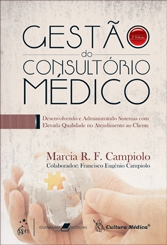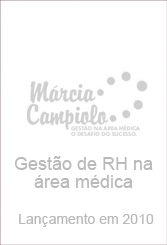 É impossível pra um homem, aprender aquilo que ele acha que já sabe
É impossível pra um homem, aprender aquilo que ele acha que já sabe 
Epiteto (Filósofo Grego, 50-130 a.C)
building up and administrating the relationship with the client

Today, more than ever, the discussion about the doctor-patient’s relation has been a theme in evidence.
With the great changes in the patient’s traits who has turned and is becoming each time more questioning, critical and demanding, seeking to get always more and more information, it is even predictable that the relation of the doctor with this patient would suffer transformations as well.
We can see nowadays an increasing number of professional doctors who are trying to get along with the current time and to maintain a better positioned relationship with his patient regarding his patient’s traits and expectations.
Today, we are in the so called “Information’s Era” and the customer is searching for a service where he feels that he is valued and fully informed. Information has become an important differential to get the client’s satisfaction and loyalty.
The doctor-patient relation today, in most of the cases, can be visualized as a process in which the relationship resumes itself to the following steps:
1.The client takes the initiative of searching for a doctor
2. The client receives the service that he was searching for
3. The client decides whether to return again to the same doctor in the future or to search for the service of another professional.
In this relation, the contact initiatives tend to start invariably from the patient.
From some years ago, a new model of making a relation with the customer started being thought, changing the methods and channels’ relationship, where the contact initiative would come from both sides, where there would be a bigger management of these relations with these clients. This technique started to be called CRM-Customer Relationship Management.
The CRM technology is increasingly expanding in several world economic areas, where new sectors started to adopt more this strategy.
It is a great change in the service’s concept which staggers the existing practice in quality and teaches the importance of cultivating clients and establishing with them a stable and durable relationship.
We know that the success of the professional doctors will rely more and more on the quality of the relationship with the client, so, the possibility of applying this concept in the medical clinic are huge, once we have many information that can be transformed in the called “contact points” with the client.
But how to create a strategy to work with CRM. In short, we can cite 3 basic steps:
The identification of groups of clients is the first step, and in the case of an Ophthalmology clinic could, for example, patients with Glaucoma diagnosis be organized in one group. This group of patients, then, could start to be a part of a work with educational approach, which through the channels would maintain a greater contact aiming to a more informed client and more attached to the treatment.
This is only an example of work that could be developed, but in reality the possibilities are huge.
The clients’ identification could then take into consideration the following steps:
• Pathologies
• Users of LC or some types of LC
• Terms of agreement
• Geographic location
• Others
In relation with the possible relationship channels being used in the clinic, could be cited as examples:
• Customized mail
• Events
• Meetings of information with customers having the same pathology
• Educational programs for specific target audience
• Website
• Others
This is a quite complex proposal of work, which requires an integrated staff, tuned and professionalized, having a clearly defined mission and vision within the clinic and the market in which it is inserted, besides the ethical precepts clearly defined within a medical focus.
The CRM is an ongoing work, which should permeate the relationship with the clients, and it should be seen more as a philosophy of work.








